Getting more ecommerce customers to your website and through to buying something can be a serious challenge.
No matter your niche, there’s a lot of competition. And there’s always Amazon and Walmart looming over the entire industry.
So you need to be trying new things – things which most of your ecommerce competitors don’t do, or don’t do well.
But you also need to be trying things which don’t cost the world. Let’s find a way to maximize your revenue without having to remortgage your house.
This article will break down some high-impact ecommerce strategies enabling you to do just that. We’ll show you how you can use your existing customers to get new ones – how to turn a single customer into 10. And then 10 into 100.
Let’s get rolling.
Get More Customer Reviews:
Reviews are an essential part of building a successful ecommerce company. If you own one, you already know this, but this is a blog article so I’ll throw a few stats at you:
- Site visitors who interact with both reviews and customer questions and answers are 105% more likely to purchase while visiting, and spend 11% more than visitors who don’t interact with user generated content. (BazaarVoice)
- Consumer reviews are significantly more trusted (nearly 12 times more) than descriptions that come from manufacturers. (eMarketer)
- Reviews produce an average 18% uplift in sales. (Revoo)
In no uncertain terms, you need to be encouraging your existing customers to rate, review, and answer questions about your products. Making this customer-generated content visible to prospective customers can have a huge influence on whether or not they buy. But how do you get more customer reviews? I recommend you read the next sentence…
How to get more customer reviews:
There are a couple options here:
1) Send people to a review-optimized landing page via email after they receive your product.
With even basic marketing automation, you can trigger an email to send 14 days after someone made a purchase (allowing for them to have received and tried it). The conditions of that email would look like this:
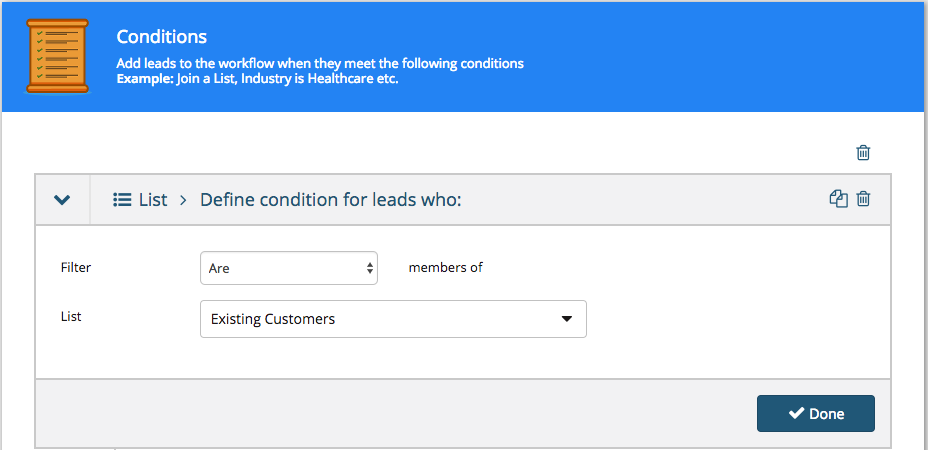
And the action (what happens when those conditions are met) look like this:

The email could look something like this:

The landing page this link sends people to (on your website), might look like this:
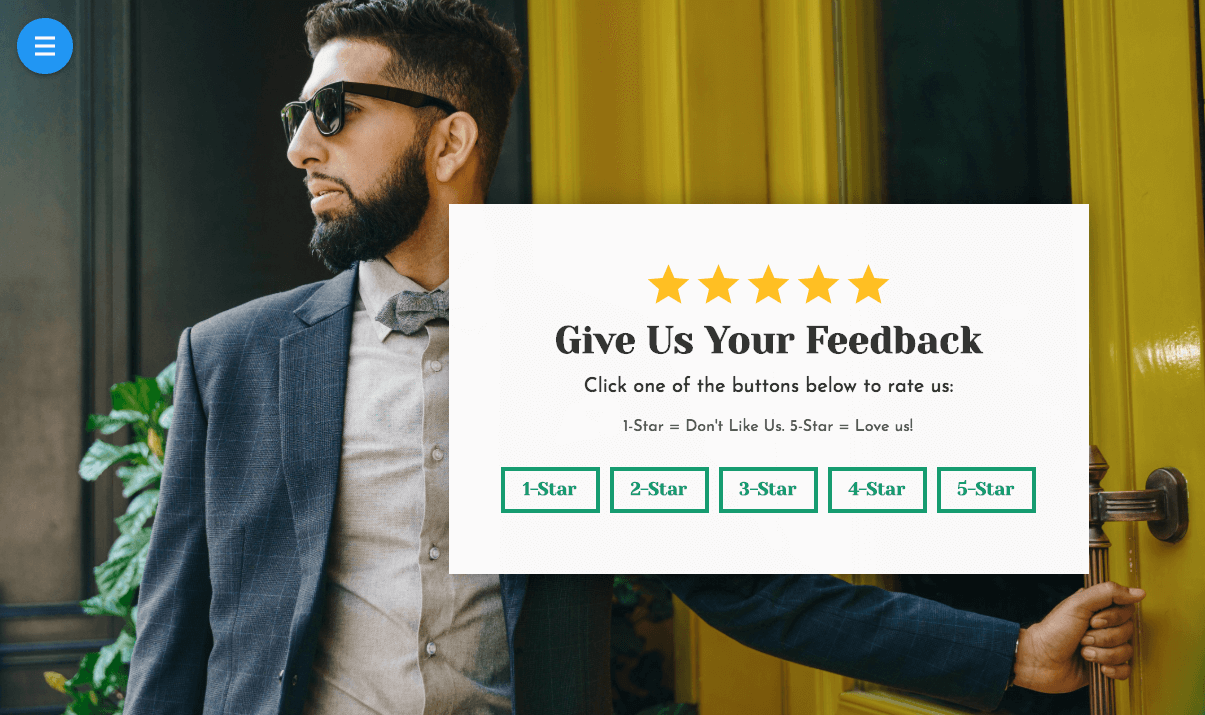
2) Prompt people to leave a review with click popups
Click popups are, very simply, a lightbox which appears when someone clicks on a link in your website. You could prompt people to leave a review from any page (or perhaps a scrolling bar at the top or bottom of your website?)
If you want to do both strategies (the email and the click popup), you can actually copy everything from the review landing page into a popup.
So it’ll look like this:
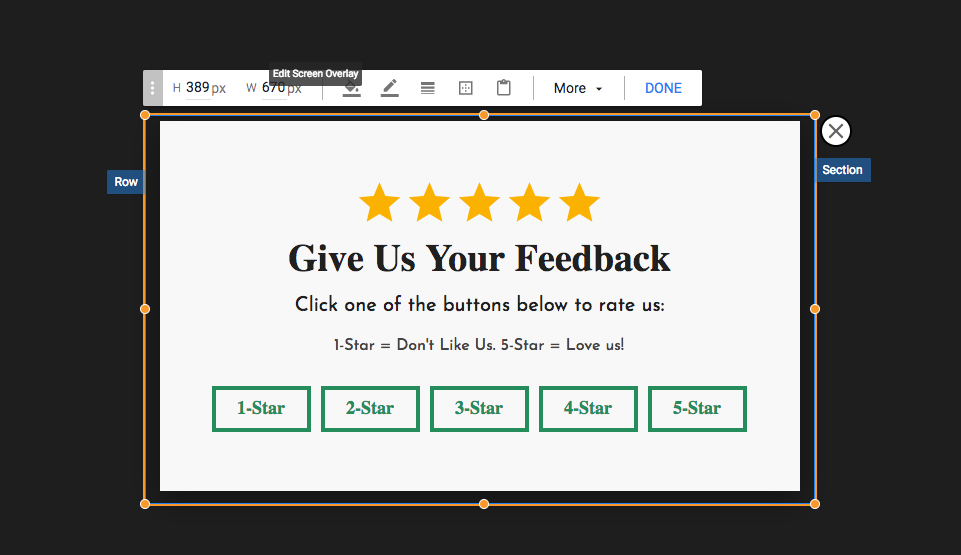
Hit “Next” in the top right of the editor and select how you want your popup to display. Click on “show when visitors [click a link]” and copy the snippet of code onto the word, button or image you want to trigger the click popup.
Like this:

Boom, with only 15 minutes of work, suddenly your website is generating more customer reviews than you know what to do with, and those reviews are driving prospective customers to convert.
I swear, this will take you 15 minutes.
This might look like a lot of work, but it took me no time using Wishpond’s ecommerce-specific email, landing page and popup templates.
Click here to talk to someone about how you can do something just like this.
Incentivize Customers to Share with their Network:
If there’s any single factor which is even more powerful than the words of a stranger, it’s the words of a friend recommending something to you.
Again, the obligatory statistics list…
- When referred by a friend, people are 4x more likely to make a purchase. (Nielsen)
- The lifetime customer value of a referred customer is 16% higher than non-referred customers (UPenn)
- Customers acquired through referrals have a 37% higher retention rate than those from different avenues. (Forbes)
Now, you could just start paying people to refer their friends, but why don’t gamify it a bit, why don’t we? After all, the refer-a-friend campaign template is already done…
Something like this:
CLICK TO EXPAND
Want to create a refer-a-friend campaign today?
Click here to dive into using this specific marketing campaign template right now, without a credit card or demo or anything.
So the strategy here would be to promote this contest either through retargeting ads (targeting your existing customers on Facebook or Google), social media posts, or an email blast. Or – and this is my recommendation – all three.
This strategy is all about taking full advantage of the customers you already have to drive new ones. You know these people are interested in your products (after all, they bought something from you at some point), so it’s more likely their friends are also going to be interested.
Offer Bonus Chances to Win if People Share with their Friends:
Incentivizing your next contest or giveaway’s entrants with bonus entries is another awesome way to expose your brand to new prospective customers.
Here’s how it works:
You set up a contest page, something like this:

CLICK TO EXPAND
Check out the entry form at the top. Above the name and email address fields, there’s a “Tweet on Twitter” option a “Follow us on Instagram” option and a “Refer a Friend” button. When these buttons are clicked, the contest tool (in this case, Wishpond) tracks that action as a an additional chance to win.
In the campaign report (where you can see all your entrants), there’s a new column: Bonus Entries:
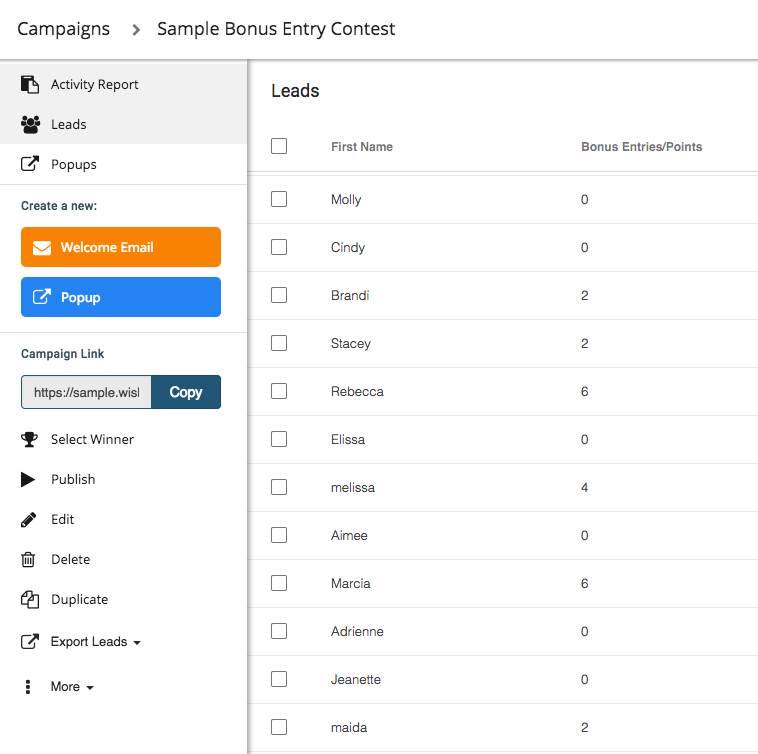
Bonus Tip:
If you want to go above and beyond with encouraging your customers and contest entrants to share with their friends and family, consider adding a leaderboard.
With a leaderboard (which should be placed on the Thank You page of your contest), people can actually see how they can earn more chances to win and, also, where they are in the running for the grand prize.
When your contest is live, it looks like this:
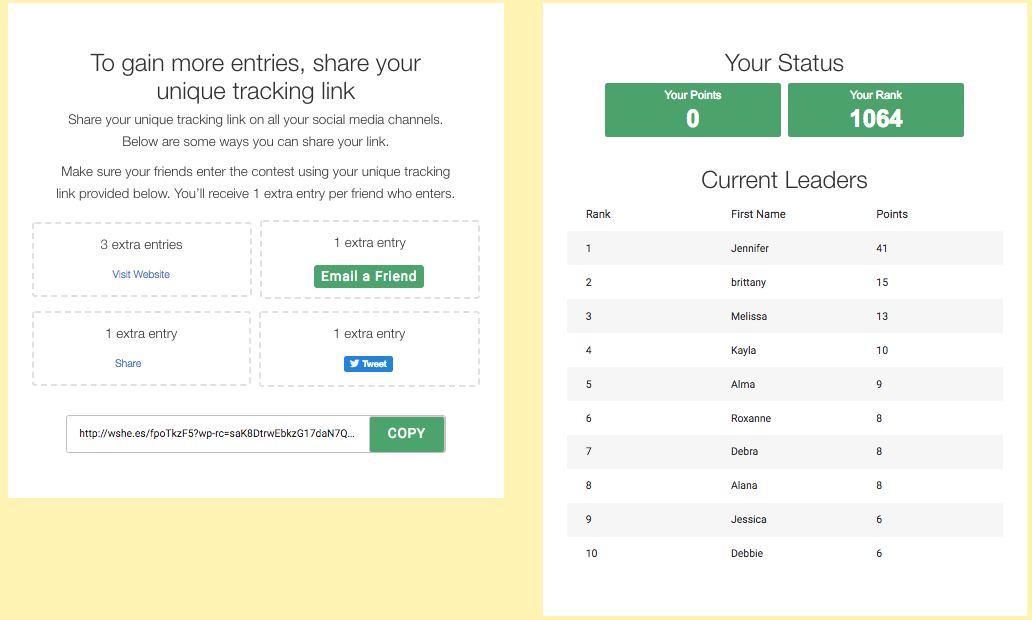
You’d be surprised at how powerful a motivator it can be to see what your “competitors” have done.
Create a Facebook Lookalike Audience from your Existing Customers:
Lookalike audiences are one of the coolest ways for you to turn your existing customers into new ones.
Facebook automatically filters through their entire user base to find people most like your existing customers (this is how you can turn one ecommerce customer into 10).
Before you even start though, I have to tell you that unless you have more than 1000 existing customers/email addresses, you’re going to be out of luck. That said, you should still read this section in order to get an understanding of how Lookalike audiences work so you can take advantage as soon as you’ve implemented the other strategies in this post and built up your customer base a bit more.
Here are the steps to turning one existing customer into 10 with Lookalike audiences:
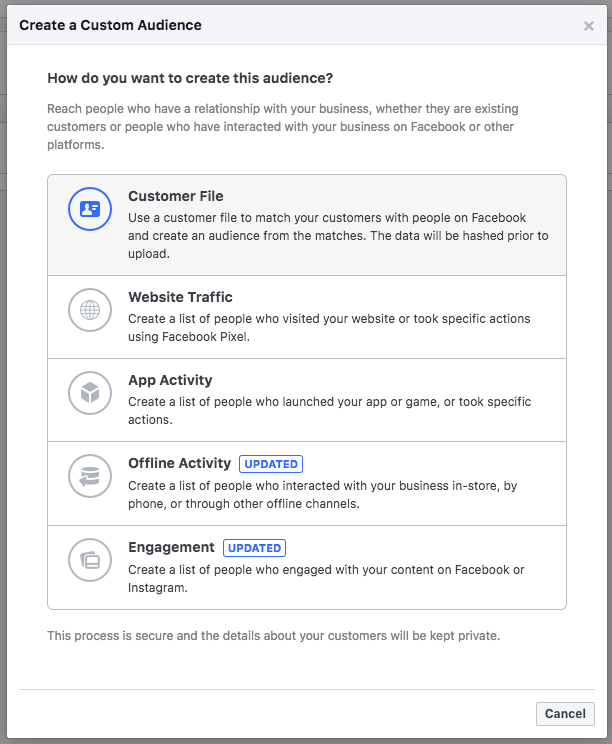
- In Facebook Ad Manager, click the three lines at the top and, under “Assets,” select “Audiences” from the dropdown.
- Under “Create Audience,” select “Custom Audience” and “Customer File” to import a list of your existing and previous customers. Note “Website Traffic” for retargeting your website visitors down the line.
- Create an ad campaign and go down to the “Audience” tab. Click on “Custom Audiences” at the top of the builder, “Create New,” then “Lookalike Audience.”
A popup will appear that looks like this:
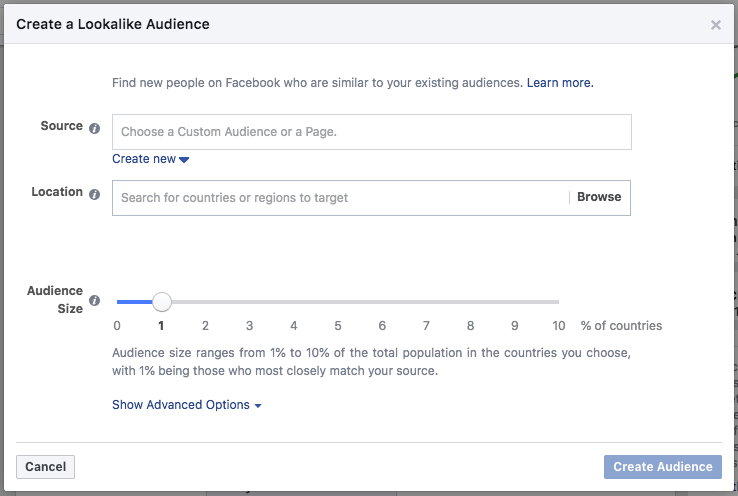
- Select your previously-uploaded custom audience as the source and choose the countries you want to target. For an ecommerce, this should be everywhere you ship.
- If you have a large list, select an audience size of 1, to make your lookalike audience as close to your custom audience as it can be, while still having enough people to target. If you’re working with only 1000 or so people, try 4 or 5. My recommendation is to not go over 5, as your audience quickly becomes too broad.
- Click “Create Audience.”
Essentially what Facebook will do now is take a look at your uploaded custom audience and cross-reference the demographic, category and interests of that audience to determine who your customers are. Then they’ll find other Facebook users who share those characteristics (either more or less specifically based on where you drag that “1 – 10” bar).
Then you’re able to target Facebook Ads directly at people who you know are similar to your existing customers (rather than trying to guess with targeting you can’t be sure of).
Want to get rolling with any of the strategies in this post?
Our ecommerce marketing experts are just a phone-call away, waiting to help you brainstorm and personalize these strategies to make them work for your business. Book a free, no-obligation call today.
Final Thoughts
There are dozens of strategies to drive traffic to your ecommerce website, but many of them cost serious bucks or serious time and energy.
The strategies in this post, instead, utilize your existing customers – the resources you already have – to create something new. New customers, new revenue and, most exciting of all, new resources to create new customers all over again.
The more customers you have, the better these strategies work. And the better these strategies work, the more customers you have. It’s a beautiful cycle of growth and regrowth.
If you have any questions about any of these ecommerce marketing strategies, be sure to reach out in the comment section below!
Related Reading:
- The Ecommerce Guide to Online Marketing: How to Drive Traffic, Get More Sales, and Keep your Customers Coming Back
- 30 Reliable Ecommerce Marketing Strategies (With Real-World Examples)
- Ecommerce Strategy Guide: Creating a Complete Sales Funnel Which Turns Visitors Into Sales
- Online Contest Strategy Guide: How to Run, Promote and Get Customers from Online Contests
- The Complete Guide to Facebook Ads
- View and Learn More About Ecommerce-Specific Marketing Campaigns




